🎮 UCHU MEGA FIGHT
2023年 2月 16日
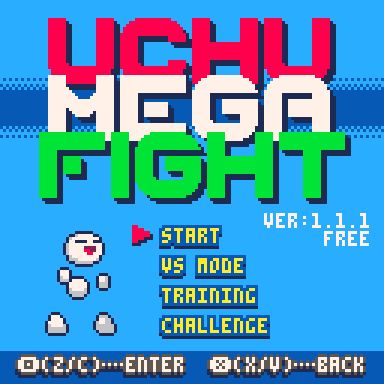
UCHU MEGA FIGHT by uchuzine!
In 1993, Nintendo released Joy Mecha Fight for the Famicom. The Famicom and NES were not particularly known for its fighting game library due to the limitations of the cartridges and system hardware, but JMF managed to capture the 1v1 arcade experience through some clever tricks. The character models were not composed of single sprites in different poses, but instead separated into floating limbs that moved together as a synchronized unit. This cut down on memory costs while still giving the impression of the large sprites of arcade fighters. It boasted an enormous roster of 36 characters and had a distinctive, fluid style of movement that set it apart from home console fighters. Unfortunately, the original JMF and Wii Virtual Console port were not released outside of Japan, and no sequels were ever made.
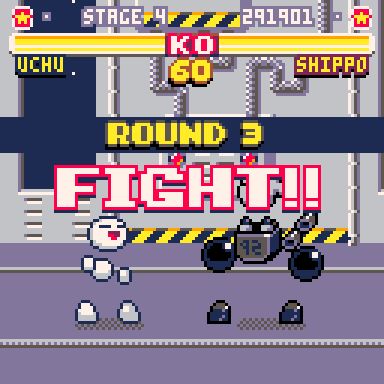
Aliens and robots and cosmic gods, oh my!
Enter UCHU MEGA FIGHT by uchuzine, a fighting game built in the PICO-8 fantasy console, and spiritual successor to Joy Mech Fight. UMF wears its love of JMF on its sleeve: the disembodied-limbs style of character models are back, and are once again employed to squeeze a ton of data into a tiny file. (PICO-8 games are notoriously limited to a mere 8192 tokens.) It nails that sense of fluidity of the original JMF while building on its foundation with a lot of interesting and original features.
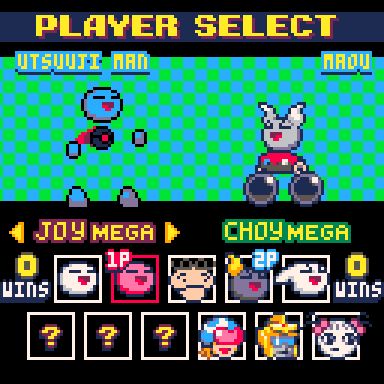
UCHU MEGA FIGHT's special feature is that each character has separate Normal, Joy Mega, and Choy Mega modes that change their appearance and play style.
You have a roster of eight characters to start with, and three more to find and unlock. Just like the Famicom/NES, PICO-8’s simple controls means that, other than your directionals, you have two buttons to work with: punch and kick. This means that even a fighting game noob like I can dive right in and pull off special techniques without needing to print out the move list. But don’t think that this means UMF is just mindless button-mashing: each fighter has a distinct rhythm to their combos, and learning to anticipate how each character performs is key to being able to clear the higher difficulties.
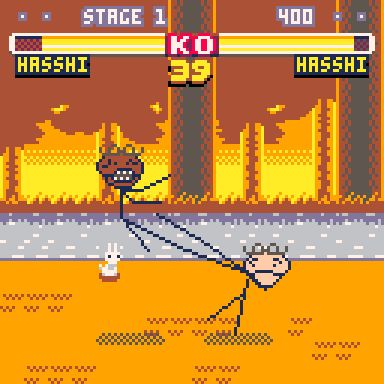
Hasshi is a ranged fighter who just rocks. Who doesn't love Hasshi or his brother, also named Hasshi?
My favorite character is the deliciously strange Hasshi. He fights by reaching out and slamming his stick-figure limbs down from afar, or by lunging himself chin-first at his opponent. He can go scuttling around on all fours like a crab, or launch himself upwards in a diamond-shape to try and stab an opponent in the air. His idle animation has him wriggling his arms, and his victory message talks about how much he loves dancing. Everything Hasshi said or did had me cracking up. All of the characters are like this, infused with so much personality and charm.
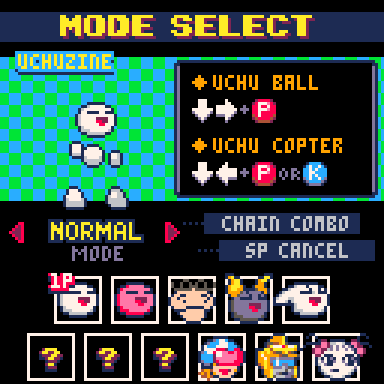
The three modes control very differently from each other, so pick and choose your favorite way to play!
Each character is also split into three modes: Normal, Joy Mega, and Choy Mega. These modes slightly alter your character’s appearance and moves. The game’s manual recommends playing Normal if you are of the Street Fighter generation, Joy Mega if you are of the JMF generation, and Choy (a little) Mega if you are of the Smash Bros generation. These are not mere palette swaps! The different modes pretty radically change how each character plays, and makes the roster feel much larger than the eleven characters on the select screen.
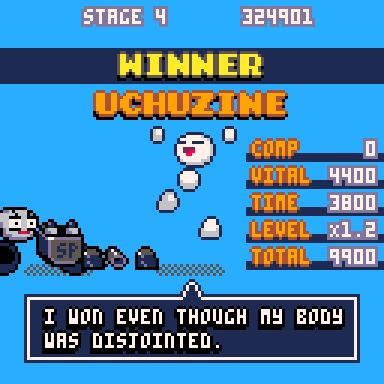
The Story mode for each character is pretty basic but still adds a lot of charm to these funny characters. Uchuzine's story is that he's an alien looking to put his body back together.
There are also quite a few different modes to play around in. You’ve got the VS Mode that you can play against another human or the CPU. You’ve got the Story mode for not only all the characters but also their different modes, and three difficulty settings (with a fourth one to unlock). And there is the Training Mode to polish up your fighting techniques, an absolute must for a noob like me. You can choose the Free Training mode and fiddle with settings like hit box and attack displays, or head to the Combo Dojo where you can learn how to properly duke it out as each character. And guess who is the sensei of the Combo Dojo? That’s right, Hasshi strikes again!
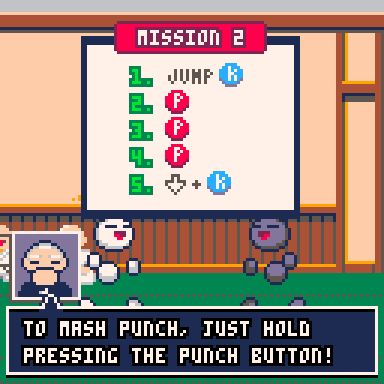
As a fighting game noob, I really appreciate the Combo Dojo teaching me how to pull off combos and special moves.
And finally, there are the five challenge modes. The classics are here, like Super Survival and Time Attack. There is the Save The Earth minigame, where you protect the planet from meteors and aliens. And perhaps most interestingly, there is a special mode that rotates out every so often. As of this writing, it’s a gauntlet-style Running Battle mode where you beat up characters as quickly as you can and collect the gems that fall from them. The challenge and story modes have online leaderboards, so even though VS Mode is local-only, you can still get that classic arcade feeling of taking on all your rivals in the UMF community.
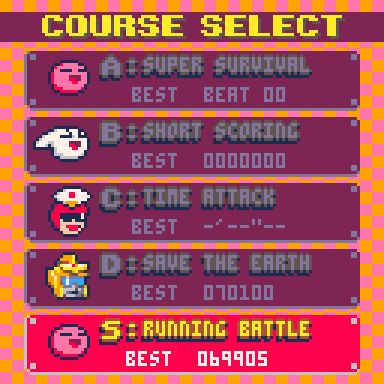
Seriously, I cannot believe all of this is crammed into a single PICO-8 file!
Because make no mistake, there is indeed a community around UCHU MEGA FIGHT, and as you would imagine, they are quite passionate. And because it is a PICO-8 game, it is a super light file playable in your browser, so anyone can start playing right away. You can hook up your game controllers or, for the real arcade experience, some fight sticks. UMF even has crossover events with other fighting games, like the retro-themed ROBO OH and the upcoming Super ROBO OH, both by Foxy Box Games.
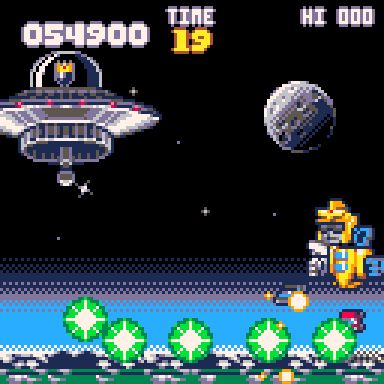
AUTOFIVE, seen here saving the earth from Kusemono, is a crossover fighter from ROBO OH.
Perhaps most incredibly to me, UMF has crossover to real life stage productions. You see, the development team, 劇団カレーライス (Stage Troupe Curry Rice) is, as its name suggests, an amateur theater company. Some of the characters are based on the real life troupe members, like Fujigaya Rei, the heavy-hitting dimension-hopping writer who is always searching for new story ideas. It turns out that Fujigaya is actually the troupe’s scriptwriter! Another unlockable character is Japan Kamen, the eccentric superhero who is based on the real life stage crew’s recurring character of the same name and design. You can see Japan Kamen in a new play starting next month called JK×JK. How funny is that!
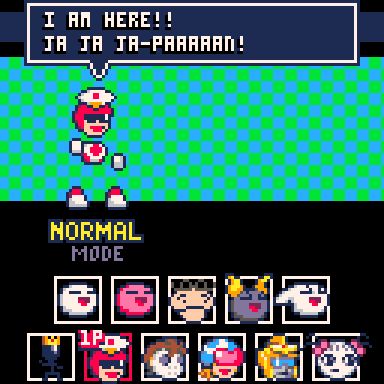
Japan Kamen joins the battle!!
To be honest, when writing this post, I did not know if I would be able to do UCHU MEGA FIGHT the justice it deserves. It is frankly incredible how much love and work must have gone into making a fighting game in PICO-8 that appeals to both outsiders to the genre (read: me) and the hardcore fans who relish the old 2D arcade fighters of old. I feel like I have only sketched out the surface level details of what is actually a deep and highly refined game. Whether or not you are part of the Joy Mech Fight generation, you owe it to yourself to check out UCHU MEGA FIGHT.
